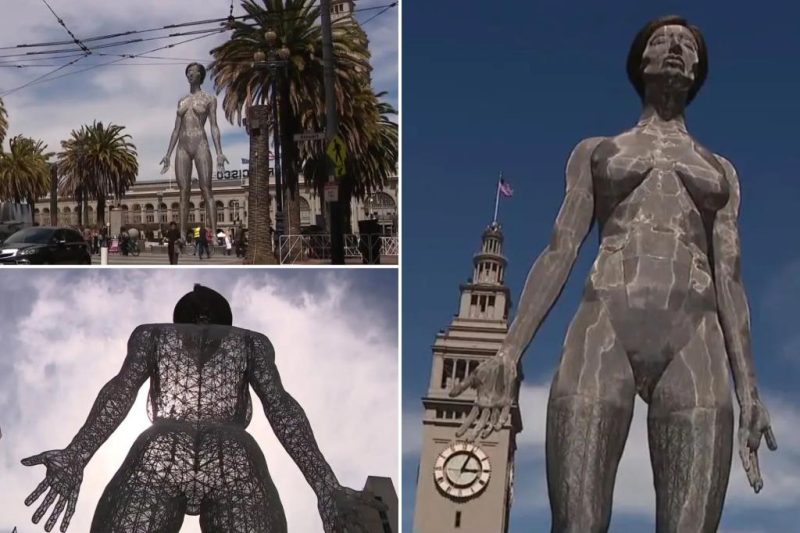
A colossal 45-foot tall statue of a nude woman has arrived in San Francisco’s Embarcadero Plaza, and it’s causing quite a stir. Dubbed “R-Evolution,” the artwork is the newest – and certainly the tallest – addition to the city’s public art collection. Its imposing size and, well, lack of clothing, have sparked a lively debate among residents and visitors alike.
Reactions have ranged from awe to outrage. Some praise the statue as a bold and powerful statement on the female form and the evolution of societal norms. Others find it inappropriate for a public space, expressing embarrassment and concern for its potential impact on children. The comments section online is a whirlwind of opinions, with many expressing strong feelings on both sides of the issue.
The artist’s intent remains a key point of discussion. While the official statement surrounding the piece hasn’t been fully released, early speculation suggests a commentary on empowerment and body positivity. However, the sheer scale of the statue and its prominent location in a busy public area undoubtedly amplify its impact, making it impossible to ignore. This raises the broader question of artistic expression in public spaces and the balance between freedom of art and community sensibilities.
The controversy surrounding “R-Evolution” highlights the complexities of public art. It forces us to consider who gets to decide what is appropriate for public viewing, and how we navigate differing opinions on artistic merit and community standards. It’s a conversation that will likely continue long after the initial shock of seeing the giant nude woman has worn off. The statue serves as a powerful reminder that art, especially in public spaces, can be a catalyst for conversation and even conflict, prompting us to engage with challenging ideas and diverse perspectives.










